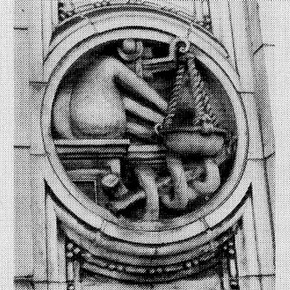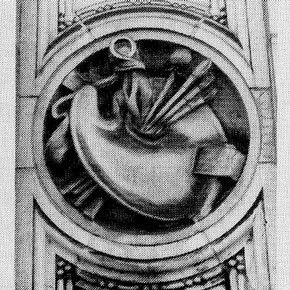Conservation Journal
April 1992 Issue 03
Editorial - What is Research?
I am told that Neil Cossons, Director of the Science Museum, recently predicted that Research would take over from Collections Management as the focus of attention in museums in the nineties.
While this issue is going to press, Christopher Frayling, Alan Cummings, several Section Heads and I will be engaged in interviews to select new students for the RCA/ V&A Joint Course. A number of this year's options are for research projects leading to an MPhil degree. Candidates for the practical MA degree options will be selected on the basis that they must be capable of undertaking a research project in one term of their second year.
Immediately following these three days of interviews Alan and I will be involved in a further three days of questioning and discussion when we go to Alfriston in Sussex to join an off-site meeting of V&A staff (and one Trustee) to discuss 'Research'. This is one stage in the process of formulating an overall research policy for the Museum, one part of which must be the research policy of its Conservation Department.
The subject of conservation research was raised at the Department's own off-site meeting at Dunford just over a year ago. The consensus drawn from the various discussion groups was that the Department must dedicate a significant part of its effort to training and a smaller yet still significant amount to research. The research effort would have to be narrowly focused and it was agreed that all research should be object-based, with the highest priority given to studies that increased stability of the collections, followed by those that improved treatment. Technical and art historical studies, while important, would have the lowest priority.
In a recent analysis it was found that less that 2% of total Departmental person-days were spent on 'Research'. It was the view of the Dunford group that a slightly larger percentage of time was more appropriate. The development of the Joint Course should help this without diminishing the Department's practical service role.
The Department's Annual Report for 1991-92 lists its longer term research projects under the headings of Passive Environmental Control, Interaction between Object and Environment, Treatment and Technical Examination.
This range of project types is reflected in the articles in this Journal. The joint project involving Imperial College and the Ceramics Conservation Section will lead to a better understanding of the early processes of glass decay, which will mean more logically founded recommendations for passive environmental control. This project is the first scientific study to be given funds by the Museum's Research Committee.
The articles on the repair and support of stained glass and the mounting of a large paper object show the processes of problem-solving in development of appropriate practical treatments; the article on English drawing materials shows the value of historical literature research, especially when combined with a technical knowledge derived from conservation practice. This range is again shown in the abstracts of projects pro-posed or undertaken by the Joint Course students.
Since the projects are all object-related, it is inevitable that they will involve collaboration with curatorial colleagues. Those projects with a stronger historical or literature base may involve collaboration with the Research Department.
The current plans for physical development of the V&A South Kensington site will make this necessary collaboration much easier, as over the next few years curators and conservators are housed closer together. The Research Department and the two joint courses (Conservation and History of Design) will be geographically linked and the courses will share library, seminar and computer facilities, which should lead to the dynamic interchange of ideas and information that is necessary for 'Research'.
April 1992 Issue 03
- Editorial - What is Research?
- The Resurrection of Death on a Pale Horse
- Vessel Glass Deterioration in the Museum Environment: A Quantitative Study by Surface Analysis
- The Mounting and Framing of a Large Work of Art on Paper; a Case Study
- Graphic Descriptions: Side-lights from Manuscript Sources on English Drawing Materials
- Conservation Study Day at the V&A 1991
- Assessment on the RCA/V&A Conservation Course: Essays, Proposals and Projects

